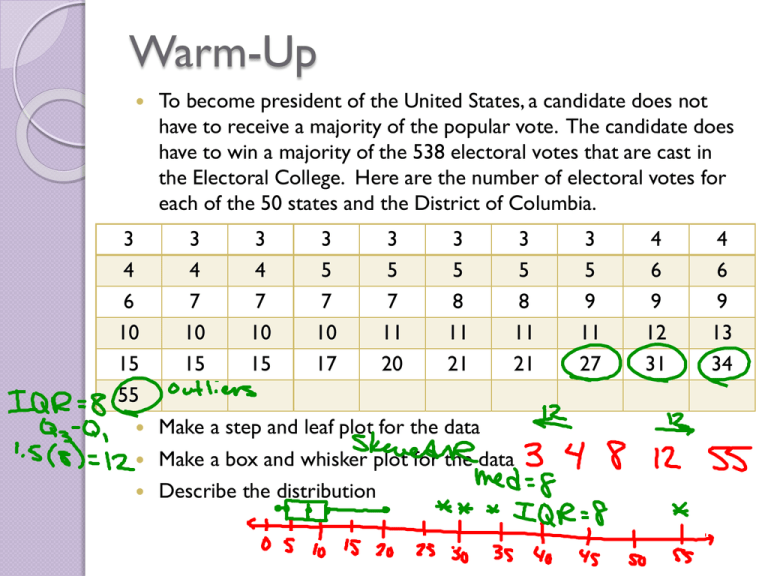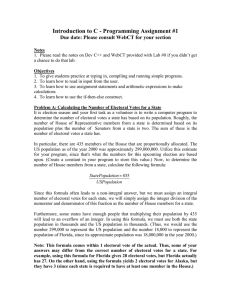Warm-Up
advertisement

Warm-Up 3 4 6 10 15 55 To become president of the United States, a candidate does not have to receive a majority of the popular vote. The candidate does have to win a majority of the 538 electoral votes that are cast in the Electoral College. Here are the number of electoral votes for each of the 50 states and the District of Columbia. 3 4 7 10 15 3 4 7 10 15 3 5 7 10 17 3 5 7 11 20 3 5 8 11 21 3 5 8 11 21 Make a step and leaf plot for the data Make a box and whisker plot for the data Describe the distribution 3 5 9 11 27 4 6 9 12 31 4 6 9 13 34 Homework Questions Quiz 1st! …then Section 1.3 Continued Numerical Summaries of Distributions Use 3 flights from our planes Find your mean/average Find your range Instead of measuring spread by range…we need a better measure of spread… Find the average distance away from the mean for your data set Pair up and discuss how you might do that Problem solve on what goes wrong, if anything, and ways you can fix it Let’s Discuss… What went wrong? What are some possible solutions to that problem? Why are we finding the average distance from the mean? Standard Deviation Variance is the average squared distance from the mean. Standard Deviation is the average distance, so you 𝑣𝑎𝑟𝑖𝑎𝑛𝑐𝑒 To find Standard Deviation Find the distance of each observation from the mean Square each of those distances Average that by dividing the sum by n-1 ◦ This = variance Sx is the square root of this average Example Here are the foot lengths (in cm) for a random sample of 14 year olds. 25, 22, 20, 25, 24, 24, 28 Mean = x 25 22 20 25 24 24 28 A few notes… You should use standard deviation when you used the mean for the measure of center Sx is always greater than or equal to 0. Sx = 0 only when there is no variability (all values have the same value) As the observations become more spread out about their mean, sx gets larger It has the same measurements as the original observation. Homework Pg 72 (97-110 all)


